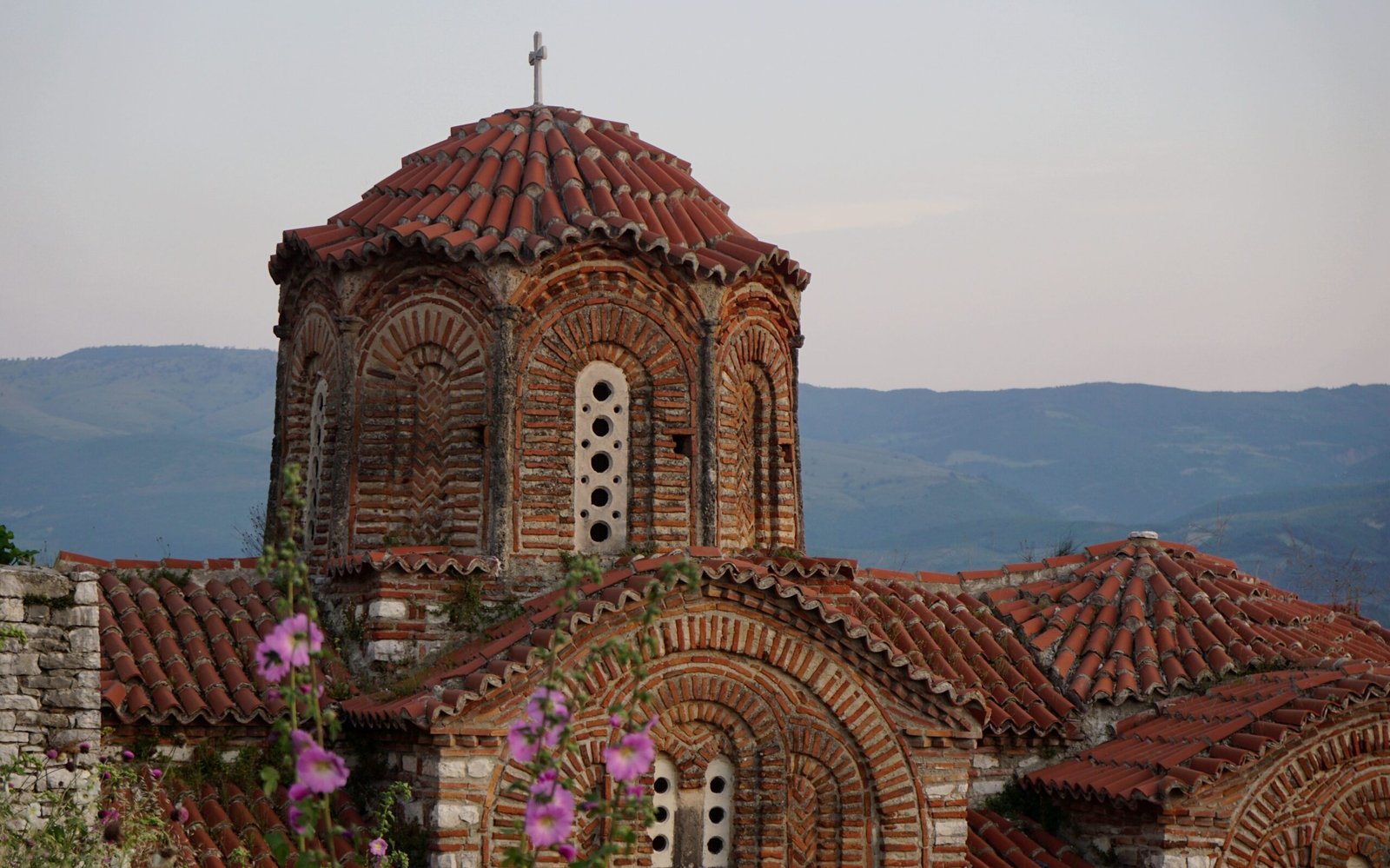Albania, a small yet captivating country in the Balkans, boasts a rich architectural heritage that mirrors its turbulent history. From ancient Illyrian ruins to modernist buildings, Albanian architecture is a fascinating blend of styles and influences. This post will take you on a journey through the architectural landscape of Albania, highlighting its significant phases and unique characteristics.
Ancient and Medieval Architecture in Albania
Illyrian and Roman Periods
Albania’s roots stretch back to the Illyrian tribes, and their fortifications dot the landscape. With the Roman conquest, cities like Apollonia and Butrint became centers of significant Roman architecture. These ancient sites showcase well-preserved amphitheaters, forums, and temples, reflecting the grandiosity of Roman design and urban planning. The ruins of Apollonia, in particular, are a testament to the city’s former status as a major Roman port and cultural center, boasting a blend of Hellenistic and Roman styles in its structures. Meanwhile, Butrint, a UNESCO World Heritage Site, presents a unique microcosm of Mediterranean history, with its layers of Greek, Roman, Byzantine, and Venetian elements embedded into the fabric of the city. These archaeological treasures not only illustrate the deep history of Albania but also the richness of its cultural and architectural heritage.

Byzantine and Medieval Periods in Albania
During the Byzantine era, a distinct architectural style emerged in Albania, with churches and monasteries featuring intricate mosaics and frescoes. Examples include the Church of St. Mary in Apollonia and the Ardenica Monastery. This period also saw the rise of iconic domed basilicas and cross-in-square churches, which are characterized by their compact, square plans and richly decorated interiors. Stone and brick were the primary building materials, often arranged in elaborate patterns to create a sense of depth and grandeur. The Byzantine influence is also notable in the extensive use of gold and vibrant colors in the artwork, which aimed to inspire awe and devotion among the faithful. These structures, often located in scenic, tranquil settings, continue to be significant pilgrimage sites and are treasured components of Albania’s cultural heritage.
Ottoman Influence
For over four centuries, Albania was under Ottoman rule, and this period left an indelible mark on its architecture. Ottoman architecture in Albania is characterized by grand mosques, such as the Et’hem Bey Mosque in Tirana, and traditional houses with stone bases and wooden upper floors. These houses, known as ‘kullë’, are often adorned with intricate carvings and detailed latticework. Moreover, the Ottoman influence is visible in the widespread use of courtyards and gardens within residential compounds, reflecting the importance of privacy and communal family space in the architectural design of the time.

Italian and Austro-Hungarian Influences
During the late 19th and early 20th centuries, coastal cities like Shkodra and Vlorë saw significant Austro-Hungarian and Italian architectural influences. This period is marked by neoclassical styles and elegant urban planning. Stately buildings, adorned with ornate facades and grand balconies, began to line the boulevards. Public squares were designed to be focal points of social life, featuring well-manicured gardens and elaborate fountains. This European influence brought a wave of sophistication and cosmopolitan flair to Albanian cities, creating a harmonious blend of local tradition and foreign artistic trends that remains visible in the urban landscapes of Albania today.
Communist Era Architecture in Albania
After WWII, Albania entered a new architectural phase under communist rule. This period is marked by stark, brutalist structures and monumental public buildings. An example is the Pyramid of Tirana, initially designed as a museum for the dictator Enver Hoxha. This era also saw widespread construction of standardized apartment blocks, reflecting the regime’s emphasis on collective living and its move away from individual property ownership. These buildings, often gray and imposing, are a ubiquitous feature in Albanian cities, standing as enduring reminders of a significant and transformative chapter in the nation’s history.

Contemporary and Revival Architecture
In recent years, Albania has seen a surge in new architectural projects. Contemporary Albanian architecture is increasingly focused on sustainability, the use of local materials, and a blend of modern design with traditional elements. This approach aims to create spaces that are harmonious with the surrounding environment, energy-efficient, and culturally resonant. As Albania continues to modernize, this wave of architecture showcases a nation keen on progress while remaining deeply connected to its rich and diverse heritage.
Unique Features of Architecture in Albania
Albanian architecture is noted for its diversity. Common elements include the use of local stone and wood, intricate carvings in religious buildings, and the distinctive ‘kulla’—a traditional Albanian tower house used for defense in turbulent times. In urban settings, vibrant bazaars and cobblestone streets often accompany Ottoman-influenced buildings. Meanwhile, in the countryside, vernacular architecture often reflects a symbiotic relationship with the landscape, featuring homes with steep roofs to handle heavy snowfall and fortified walls for protection. As Albania evolves, its architecture continues to be a dynamic blend of past and present, showcasing a resilient and adaptive cultural identity.

Albania’s architecture is a rich tapestry woven from various historical, cultural, and social threads. From ancient ruins to modern buildings, the architectural landscape of Albania tells the story of a resilient and diverse nation continually evolving and adapting. Visiting Albania offers a chance to walk through history, one building at a time.


